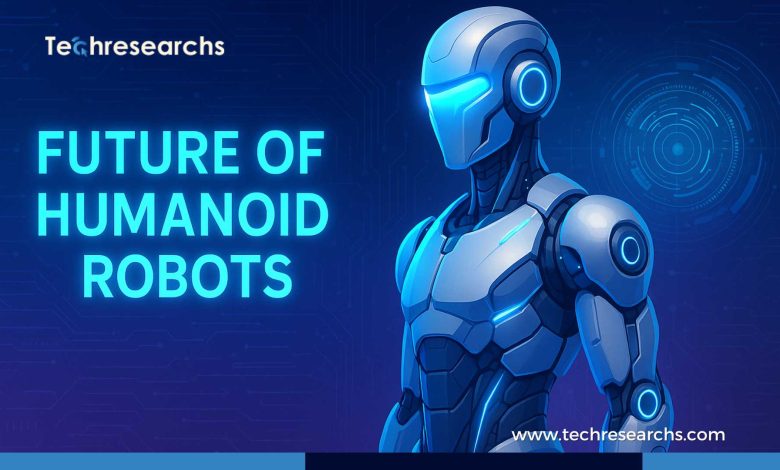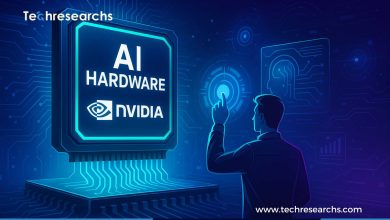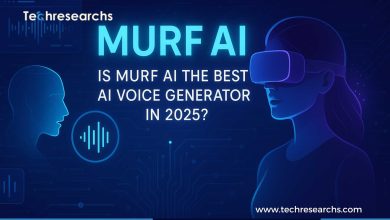The Future of Humanoid Robots: What You Must Know Now

Humanoid robots are no longer a thing of sci-fi movies—they’re becoming part of our evolving reality. From lifelike gestures to emotional expressions, the future of humanoid robots is advancing faster than most people realize.
These intelligent machines are being designed to think, move, and interact like humans. Powered by artificial intelligence (AI), machine learning, and robotic engineering, they’re expected to transform industries like healthcare, education, and manufacturing.
Let’s take a deeper look into what the future holds, what technologies are fueling this change, and how soon these robotic companions might become mainstream.
What Are Humanoid Robots—and Why Are They Special?
Humanoid robots are machines designed to resemble the human body. They can walk upright, mimic facial expressions, and interact with people in ways that feel almost natural. What sets them apart is their human-like behavior, which makes them useful in environments where traditional robots struggle.
Popular examples include:
- Tesla Optimus – A humanoid designed for factory work.
- Honda ASIMO – Known for walking and navigating complex spaces.
- Ameca – Famous for hyper-realistic facial expressions.
Unlike industrial robots, these machines aim to collaborate with humans, not just replace them.
Technologies Driving the Future of Humanoid Robots
The future of humanoid robots depends on more than just clever design. It’s the fusion of various advanced technologies that brings them to life.
1. Artificial Intelligence and Deep Learning
AI helps humanoid robots understand language, process images, and make real-time decisions. With each interaction, they learn and evolve.
2. Natural Language Processing (NLP)
Through NLP, robots like Sophia and Ameca can communicate in natural, human language, making conversations more intuitive.
3. Actuators and Sensors
Robots need to move fluidly. Advanced sensors and actuators allow for realistic motion and sensitivity—like grip strength, facial movement, and balance.
4. Edge Computing and IoT
Decentralized computing enables faster decision-making at the source—critical in environments like hospitals or manufacturing floors.
Where Humanoid Robots Will Have the Biggest Impact
Humanoid robots are expected to disrupt several industries. Here’s how:
| Industry | Robot Use Case | Benefit |
|---|---|---|
| Healthcare | Patient monitoring, elderly care | Reduces workload, increases safety |
| Education | Personalized tutoring, classroom aid | Enhances engagement and reach |
| Retail & Service | Reception, sales assistance | Cost-effective 24/7 service |
| Manufacturing | Repetitive labor, quality control | Precision, efficiency |
| Space Exploration | Autonomous maintenance, data collection | Human-like dexterity in harsh zones |
Robots can work long hours, avoid fatigue, and consistently deliver quality—all while interacting with humans in relatable ways.
🇮🇳 India’s Growing Interest in Humanoid Robotics
India isn’t lagging behind. With innovation hubs like Bengaluru and Chennai, the country is fostering a new generation of robotics startups. Institutions like IIT Bombay and IIT Kanpur are already working on humanoid prototypes designed for healthcare and education sectors.
What makes this exciting is the focus on affordable and scalable humanoid tech, tailored to Indian needs—language diversity, rural deployment, and multilingual support.
The Challenges Ahead
Despite the optimism, several hurdles must be overcome:
- Cost of Development – Building lifelike robots is expensive and time-consuming.
- Ethical Questions – Should robots have rights? Can they make moral choices?
- Job Displacement – Many fear robots will take over critical human jobs.
- Security and Privacy – Smart robots gather data; how secure is that information?
These concerns call for international collaboration on AI governance, robotic ethics, and transparent regulation.
Trends to Watch in the Next 5 Years
The future of humanoid robots will likely include:
- Emotionally intelligent robots that can detect and respond to human moods.
- Cloud-connected robotic assistants for home use.
- AI tutors capable of understanding student learning styles.
- Service bots in tourism, hotels, and healthcare across India and Asia.
- Custom-built robots for personal companionship or mental health support.
We’re not just talking about mechanics; we’re talking about empathetic, responsive, and smart machines becoming part of everyday life.
FAQs About Future of humanoid robots
Q1: Will humanoid robots become part of everyday homes?
A. Yes. While currently expensive, experts predict consumer-grade humanoid assistants could enter homes within a decade, starting with elder care and companionship.
Q2: How are humanoid robots different from industrial robots?
A. Humanoid robots are designed to interact with humans using speech, facial expressions, and natural movement, whereas industrial robots focus solely on task automation.
Q3: Can humanoid robots feel emotions?
A. Not in a human sense. But they can simulate emotional responses based on inputs like tone of voice, gestures, or context—thanks to emotion-detection AI.
Q4: Are humanoid robots being used in India?
A. Yes. Pilot projects in education and elderly care are underway, and IITs are developing region-specific humanoid solutions.
Summary Table: Humanoid Robots Today vs. The Future
| Feature | Current State | Future Possibility |
|---|---|---|
| Movement | Basic walking, obstacle avoidance | Full-body agility, stair navigation |
| Communication | Pre-programmed phrases, limited NLP | Real-time, context-aware conversations |
| Emotional Response | Simulated expressions | Emotion-aware interaction using AI |
| Cost | High-end models cost $100K+ | Consumer-level bots under $5K |
| Integration in Society | Limited to labs and demos | Mainstream in homes, schools, and offices |
What Comes Next?
The future of humanoid robots is moving from fantasy to reality—fast. As AI, hardware, and design continue to evolve, we’ll likely see robots that are not only smart but socially aware and emotionally engaging.
But this future requires thoughtful design, policy, and user education. If approached responsibly, humanoid robots could become one of humanity’s greatest tools—not just as workers, but as companions, teachers, and helpers.



